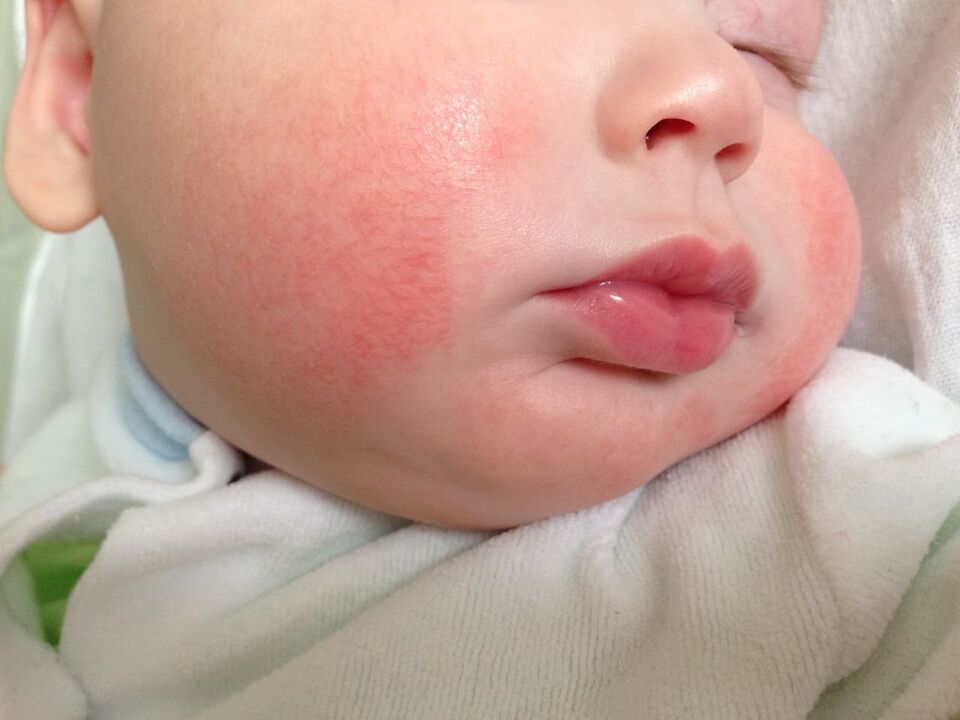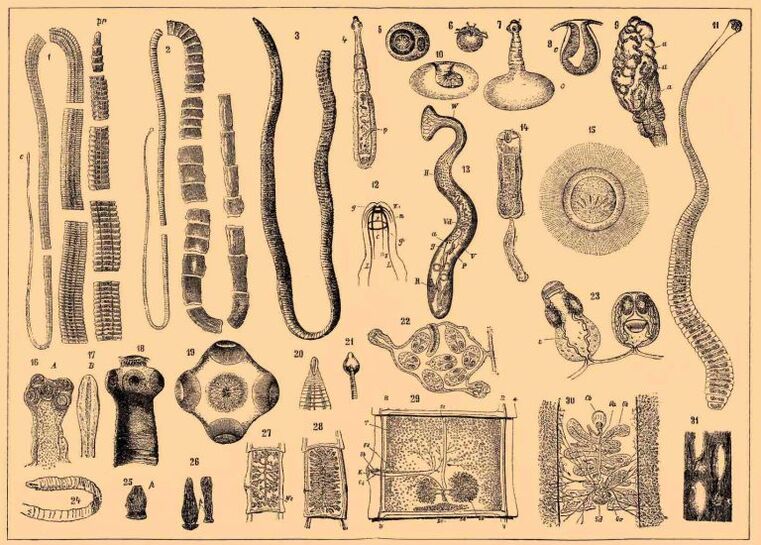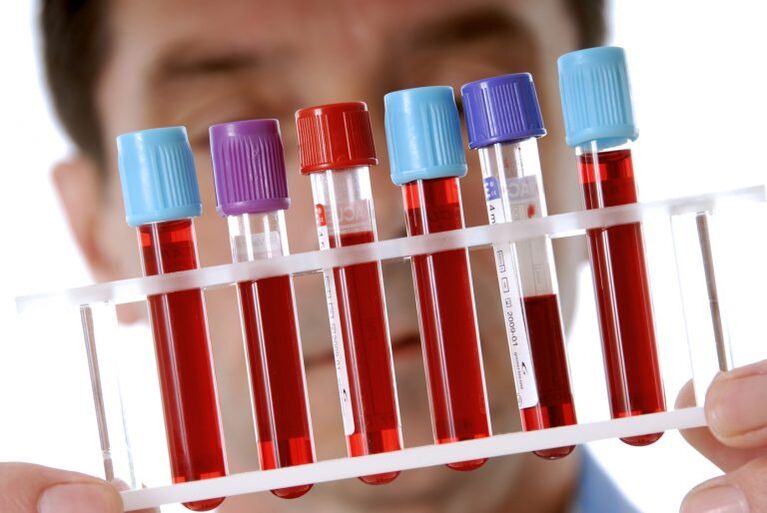Various scientific studies have confirmed the association of a number of human pathological conditions with parasitic diseases. Worms that occur in humans often do not give the characteristic symptoms of the disease, so they can exist in the body for many years, provoking dangerous complications and pathologies. Sometimes the only symptom of a parasitic disease may be black dots in the stool or light colored helminths and worms in the stool. To determine if there are any worms in the human body, a diagnosis must be made. Stool is studied first, so it is very important to know what worms look like in human feces and to understand the types of parasites that occur in humans. In addition to the types of parasites, our article describes the symptoms of worms in humans and the methods of diagnosing the parasitic disease.
Symptoms of worms in humans

From the photo, it’s easy to see what the worm eggs look like in the stool and the worms themselves. The different worms in the person in the picture can be significantly different. Some eggworms or adults are very small in size, and other parasites in their stools and eggs can be seen without a microscope. Therefore, when answering the question of whether eggs are visible to the naked eye, it is necessary to consider which worms live in a person.
Eggs in the stool do not always appear, sometimes the only symptoms of helminthiasis may be the following:
- weight loss;
- general weakness;
- there is often rapid fatigue;
- the skin will be pale;
- itching in the anal region.
However, some of the symptoms of the disease caused by worm larvae or adults are not even associated with worms. These symptoms include:
- bloating, diarrhea and constipation;
- nausea and vomiting;
- pain in the navel and right hypochondria.
When such symptoms occur, the weight of the stool should be checked first. In this case, the smallest worm eggs can be detected in the stool. Because worm eggs are difficult to self-identify, it is better to refer the feces to the laboratory for analysis. Only a specialist knows what a worm looks like.
Sometimes there are no parasites in the stool, but the patient shows signs of general poisoning. When parasitic toxins affect the human nervous system, the following symptoms of the disease occur:
- dizziness;
- fatigue;
- headache;
- increased irritability;
- drowsiness;
- depression;
- convulsions;
- temperature rise.

When worms and their eggs are found in a child's stools, the symptoms of the disease are often accompanied by a variety of allergic manifestations:
- urticaria, dermatitis;
- skin rashes;
- itchy skin, redness.
Worms can only be detected in the stools of an adult or a child at a certain stage of the disease, and not always. This is why it is not so important to know what parasitic larvae look like, but to understand the symptoms of a particular parasitic disease:
- Worms that cause enterobiasis usually cause severe itching in the anal area, which worsens at night. This is due to the fact that these nematodes (spindleworms) lay their eggs on the perianal folds, crawling out of the anus.
- Typical symptoms of ankylostomiasis, diphyllobothriasis, and trichuriasis are anemia and beriberi.
- The symptoms of ascariasis depend on the stage of development of the helminth. In the migration phase, the clinical picture is expressed by the syndrome of the respiratory system (shortness of breath, cough, bronchitis, pneumonia). Symptoms characteristic of gastrointestinal pathologies appear in the intestinal tract. In this case, black spots may appear in the stool.
- Fever, swelling of the face and muscle pain with trichinosis.
- If trematodes have settled in the liver, inflammation of the pancreas develops, sclerosis and yellowing of the skin, the spleen becomes enlarged. With this form of the disease, black fibers and dots in the stool may be missing.
- Schistosomiasis causes bleeding in the urogenital system, so urine may mix with blood. The parasite often causes indigestion.
Types of worms

In the picture, the worms in humans can be dramatically different depending on whether they belong to a particular species. So tapeworms and tapeworms parasitize the human body. The same kind of helminth patterns in the picture may differ. So dumplings, nematodes, trichinella, tapeworms, hookworms belong to the order of roller worms. There are two classes of flatworms:
- cestodes (these are porcine and bovine tapeworms, echinococcus, broad tapeworms, alveococcus);
- trematodes (these include schistosomes, opisthorchis, paragonim).
You can find out what this or that helminth looks like from the photo. We describe the characteristics of the existence of the main parasites of the human body:
- Pinworms provoke enterobiasis, the symptoms of which appear on the third day after infection. The egg enters the body with unwashed hands, fruits and herbs.
- It causes a disease called Vlasoglav trichuriasis. The first symptoms appear 21-35 days after the invasion. Infection occurs when we cook in unhealthy conditions. Usually the patient suffers from diarrhea, anorexia, abdominal pain. This may be an inflammation of the appendix.
- Diphyllobothriasis is responsible for a broad tapeworm. The disease manifests itself within 2-5 weeks from the moment of infection. The parasite enters the body with infected poorly fried fish. This intestinal worm can live in the human body for decades, causing anemia, beriberi, intestinal obstruction, allergies and poisoning.
- Cylindrical worms are the culprits of ascariasis. When infected with these worms, blackheads can appear in the stools of both adults and children. It lasts for three months from the moment of invasion until the clinical picture appears. The parasite enters the intestines with plant food.
- Roundworm - hookworm provokes the hookworm. Infection can occur when working in the soil, walking barefoot on the soil. The disease appears 5-8 days after infection. First there is itching and swelling at the site of the parasite, followed by a cough with copious sputum, dizziness, weakness.
- Giant liverwort causes fascioliasis. The parasite enters the body with contaminated water and plant foods. The first signs of the disease appear at 0, 5-1 months after the onset of the invasion. The disease manifests itself in dry cough, fever, abdominal pain and loss of appetite.
- A worm called trichinella is responsible for trichinosis in humans. Helminth can get into the human body with poorly processed meat and fat. The first symptoms appear two days after infection. Usually, the patient suffers from diarrhea, heartburn and nausea.
Diagnosis of helminthiasis

In the diagnosis of many helminthiasis, a stool test is performed first. If you find black spots in the stool or white worms in the stool, this analysis should be done as soon as possible.
However, it is not only the black polka dot stool that indicates the coprogram. Often, even eggs invisible to the eye can be easily identified under a microscope. More accurate diagnosis of fecal mass is made by PCR for the detection of helminth DNA particles.
If a person has a lot of black spots in the stool, it is worth mentioning the following, among other diagnostic methods:
- Scraping the area near the anus;
- Blood test by ELISA, PCR, RNGA and other methods;
- Be sure to perform blood biochemistry and KLA;
- In some cases, ultrasound, MRI, and CT are performed to identify the localization sites of the parasites;
- An X-ray examination should be performed to diagnose the migration phase of helminth samples.
For some forms of helminthiasis, sputum, rectal mucus, urine, and gallbladder contents may be tested. Endoscopic examination is sometimes used during diagnosis.





























